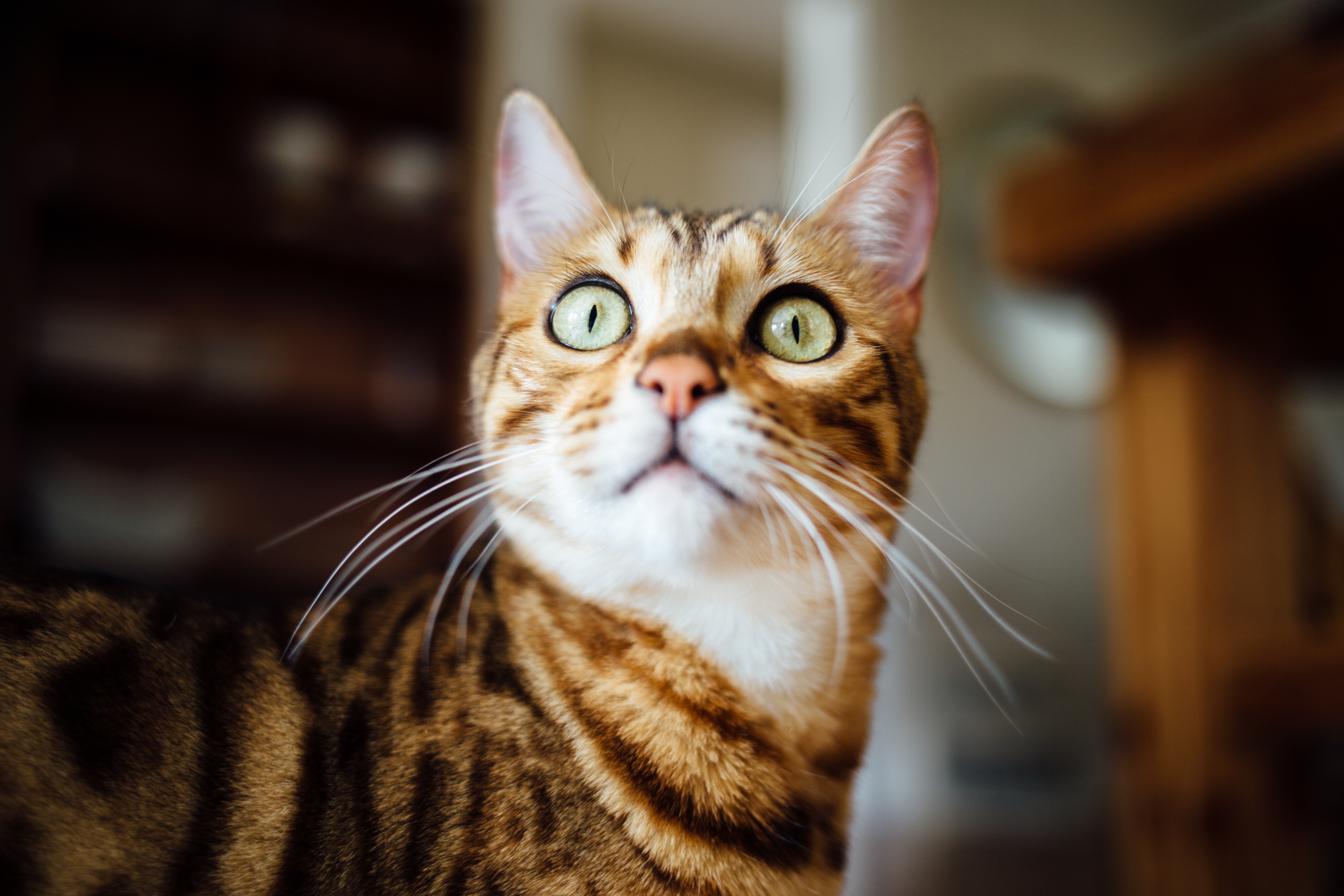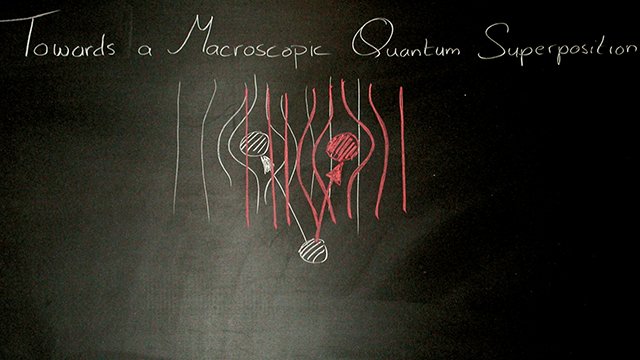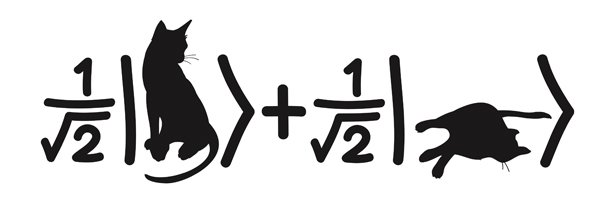Is this bloody cat dead? / Czy ten cholerny kot jest martwy? [EN / PL]

Cats on the Internet;
The Internet is made for watching funny cats. This fact is undeniable! Who doesn't like to watch funny cats ... But few know that a hypothetical cat has contributed to the development of science, and consequently to the development of computers!
Koty w internecie;
Internet jest po to, aby oglądać filmiki ze śmiesznymi kotami. Ten fakt jest niezaprzeczalny! Kto nie lubi oglądać śmiesznych kotów... Jednak niewielu wie, że pewien hipotetyczny kot przyczynił się do rozwoju nauki, a w konsekwencji do rozwoju komputerów!

Erwin Rudolf Josef Alexander Schrödinger;
Quantum mechanics proves to be one of the most successful theories in history. It perfectly fits the results of micro experiments. However, its interpretation isn't clear. Around 1927, physicists Niels Bohr and Werner Heisenberg and several others created the Copenhagen Interpretation of Quantum Mechanics, according to which:
- The wave function of a quantum system fully represents the state of the observer's knowledge of the system.
- Description of nature is probabilistic.
- We can't know all the properties of the system at any given time (Heisenberg's uncertainty principle).
- Materia exhibits corpuscular-wave duality.
- On the border where the size of the system is approaching macroscopic, the quantum-mechanical description should produce results consistent with the results of the classical description.
However, not everyone agrees with this interpretation. Its opponents included Albert Einstein and Erwin Schrödinger, who decided to present a thought experiment known as Schrödinger's Cat.
Erwin Rudolf Josef Alexander Schrödinger;
Mechanika kwantowa okazuje się być jedną z najbardziej udanych teorii w historii. Doskonale przewiduje wyniki eksperymentów w skali mikro. Jednak jej interpretacja nie jest jasna. W okolicach roku 1927 fizycy Niels Bohr oraz Werner Heisenberg oraz kilku innych stworzyli Interpretację Kopenhaską mechaniki kwantowej, według której:
- Funkcja falowa układu kwantowego reprezentuje w pełni stan wiedzy obserwatora o tym układzie.
- Opis przyrody jest probabilistyczny.
- Nie możemy poznać wszystkich właściwości systemu w danym czasie (zasada nieokreśloności Heisenberga).
- Materia wykazuje dualizm korpuskularno-falowy.
- W granicy gdy rozmiar układu zbliża się do makroskopowego, opis kwantowo-mechaniczny powinien dawać rezultaty zgodne z wynikami opisu klasycznego.
Jednak nie wszyscy zgadzali się z tą interpretacją. Jej przeciwnikami byli między innymi Albert Einstein oraz Erwin Schrödinger, który to postanowił przedstawić eksperyment myślowy znany dziś jako Kot Schrödingera.

Superposition state;
Before we jump into Schrödinger experiment, we must know what a superposition is. There is a well-known experiment, where light is passed through two adjacent slits. The light in this experiment behaved like a wave, creating an interference pattern on the screen behind the slits. The scientists repeated the experiment, but this time they fired a single electron instead of a beam of light. It turned out that the interference pattern was created again on the screen ... But how is it possible? It means that the electron flew through two slits at the same time! It turns out that the electron was in a superposition, that is, it was in all possible states at the same time. Interestingly, when the researchers placed a detector near the slits, the electron stopped beeing in all places at the same time and "chose" one slit through which it flew and on the screen they did not observe an interference pattern. This means that adding an observer changes the outcome of the experiment!
Superpozycja stanu;
Zanim przejdziemy do opisu eksperymentu Schrödingera musimy poznać, czym jest superpozycja. Powszechnie znany jest eksperyment, w którym przez dwie położone obok siebie szczeliny przepuszczano światło. Światło w owym eksperymencie zachowywało się jak fala, tworząc na ekranie umieszczonym za szczelinami wzór interferencyjny. Naukowcy powtórzyli ten eksperyment, jednak tym razem zamiast wiązki światła strzelali pojedynczym elektronem. Okazało się, że na ekranie znów powstał wzór interferencyjny... Ale zaraz, jak to jest możliwe? Przecież oznacza to, że elektron przeleciał przez dwie szczeliny jednocześnie! Okazuje się, że elektron był w stanie superpozycji, czyli występował we wszystkich możliwych stanach w tym samym czasie. Co ciekawe, gdy naukowcy umieścili przy szczelinach detektor, to elektron przestał być we wszystkich miejscach jednocześnie i "wybrał" jedną szczelinę, przez którą przeleciał i na ekranie nie zaobserwowali oni wzoru interferencyjnego. Oznacza to, że dodanie obserwatora zmienia wynik eksperymentu!

Schrödinger's Cat;
Schrödinger was opposed to the Copenhagen Interpretation and to present the absurdity of its assumptions he presented a thought experiment. The idea was to close the cat in a tight box where he had a 50% chance of survival. And now - if we don't know what happened in the box, so we didn't observe - can we conclude with certainty that the cat is alive or dead? Intuitively, we say that a cat can only be alive or dead, but according to the Copenhagen Interpretation, the cat is alive and dead at the same time! We see superposition of live cat and dead (all possible states). However, after opening the box we will see live or dead cat.
Kot Schrödingera;
Schrödinger był przeciwnikiem Interpretacji Kopenhaskiej i aby pokazać absurdalność jej założeń przedstawił pewien eksperyment myślowy. Polegał on na zamknięciu kota w szczelnym pudle, w którym miał 50% szans na przeżycie. I teraz - jeśli nie wiemy co się stało w środku, tzn. nie dokonaliśmy obserwacji - czy możemy stwierdzić z całą pewnością, że kot jest żywy lub martwy? Intuicyjnie powiemy, że kot może być tylko żywy lub martwy, jednak według Interpretacji Kopenhaskiej kot jest jednocześnie żywy i martwy! Widzimy tu superpozycję kota żywego z martwym (wszystkie możliwe stany). Jednak po otworzeniu pudełka zobaczymy kota żywego bądź martwego.

This bloody cat!;
Since presenting this thought experiment in 1935, it is assumed that every new interpretation of quantum mechanics must deal with Schrödinger's problem.
What do you think, can we predict the state of the cat before observation? Or is the cat itself an observer?
Ten cholerny kot!;
Od przedstawienia tego eksperymentu myślowego w 1935 roku przyjmuje się, że każda nowa interpretacja mechaniki kwantowej musi poradzić sobie z problemem Kota Schrödingera.
A Ty jak uważasz, czy można stwierdzić stan kota przed obserwacją? A może kot jest sam w sobie obserwatorem?
This post received a 4.3% upvote from @randowhale thanks to @jakipatryk! For more information, click here!
We can't predict the state of the cat; that is the nature of superposition. The cat is not an observer, but a metaphor. Disclaimer: my understanding of quantum mechanics is severely limited.
#cats (you are missing a tag) + #science = upvote :-)
Done ;D
An unbeatable formula.
Like your posts gtg, just started following.
Często mam tak że jeśli coś sie dzieje lub wydarzyło równolegle ale o tym nie wiem, to wynik również przybiera roznorodne wyniki do momentu gdy dowiaduje sie co sie stalo. Powiedzmy ze pisałem na studiach kolkwium, wykladowca je sprawdził i mimo ze ocena już jest, jest jednocześnie 2 i 3 jednak dopiero jak sie dowiaduje staje sje jedną z tych wartości. Wydaje mi sie ze podbnie jest w momecie zagubienia jakieś rzeczy w domu, niby obstawiamy miejsca gdzie moze być, a czesto okazuje się ze znajdujemy w zupelnie odmiennym miejscu. Tutaj zachodzi zjawisko odwrotne tj. zgubionej rzeczy nie ma nigdzie i się gdzieś pojawia. Tak to widzę :p
He he, I have to admit, I was reading through this and the whole time I was just thinking: "how does he manage to do double columns in steemit??".
You have to use HTML editor, then <.div class="pull-left">content on the left side<./div> and in <.div class="pull-right">content you want on the right<./div> (you have to remove dots after <)
Ah,you just boggled my brain. I'm sure it's just momentary bogglement though! I'll try that some time as it's an eloquent solution to bilingual posts. Thank you!
Congratulations! This post has been upvoted from the communal account, @minnowsupport, by jakipatryk from the Minnow Support Project. It's a witness project run by aggroed, ausbitbank, teamsteem, theprophet0, and someguy123. The goal is to help Steemit grow by supporting Minnows and creating a social network. Please find us in the Peace, Abundance, and Liberty Network (PALnet) Discord Channel. It's a completely public and open space to all members of the Steemit community who voluntarily choose to be there.
If you like what we're doing please upvote this comment so we can continue to build the community account that's supporting all members.
I learned that from my cat

I'm doing sth similar, when my wife is trying to wake me up and send me to work :-).